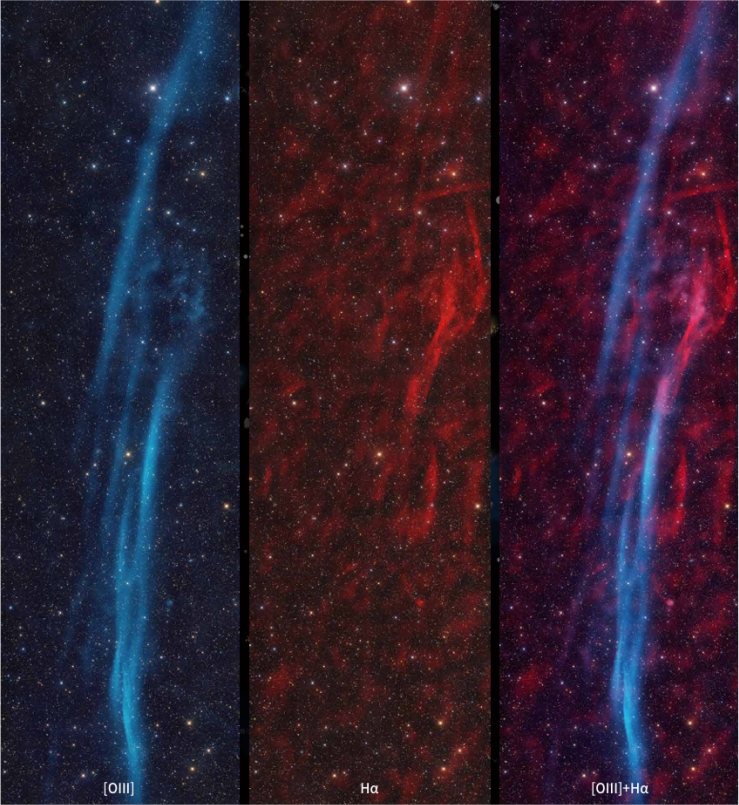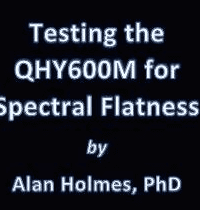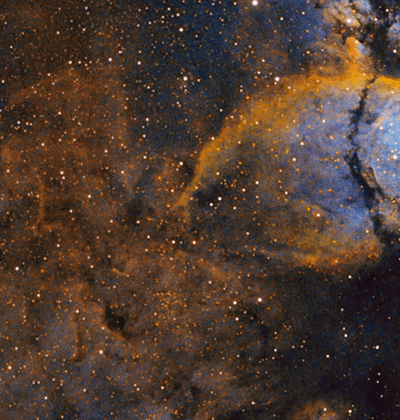A team of astronomy enthusiasts from China called SWONS (Super Wide-field [OIII] Narrowband Survey) discovered an astonishing [OIII] nebula in the winter sky. They made this discovery during their super wide field narrowband survey project in 2023. They named the target “Silk Nebula.”
This wide-field narrowband survey employs deep exposures with wide-field equipment and narrowband filters. For the survey project, the team used the highly sensitive, cooled astronomy camera QHY1920M for their survey observations. This camera features a large 12um pixel size, providing inherent advantages in capturing low-light signals. It has a backside-illuminated quantum efficiency of 91% and a readout noise of only 0.8e- in high-gain mode, making it suitable for rapid acquisition of low-light narrowband targets. Additionally, they used a 50mm focal length, f/0.95 ultrafast lens, building a super wide field rapid survey system with an effective field of view of 400 square degrees. To avoid bandwidth shift caused by large-angle light incidence on the filter surface, the [OIII] filter is positioned centrally within the optical path of the system.
In late 2023, the SWONS team discovered a ribbon-like object while processing data. They further investigated the area using a 180mm aperture reflector telescope with a focal ratio of 2.8. The telescope was equipped with a 5nm bandwidth [OIII] filter and a full-frame cooled astronomy camera QHY600M. They conducted a rapid exposure totaling 1.5 hours, comprising a 9-panel mosaic in a north-south direction. Building on this, they performed higher-resolution deep exposures of the region, totaling 36 hours in the [OIII] band and 24 hours in the Ha band. And this revealed the nebula’s rich structure. To rule out any inaccuracies from amateur telescopes and filters, the team also applied for observation time on professional telescopes. Finally, they confirmed the object’s existence of the object in the [OIII] band.
The nebula appears as a ribbon-like structure, extending in a north-south direction. It measures approximately 1.5 degrees wide from east to west and about 15 degrees long from north to south, resembling a silk ribbon floating in the cosmos.
The [OIII] emission is particularly strong in the nebula’s region, while the [SII] and Ha bands show almost no corresponding structures visible in the [OIII] band. The southern part of the [OIII] band is notably bright with prominent structures. It displays multiple filamentary layers similar to those found in supernova remnants, along with a certain degree of curvature. Photometric measurements of the [OIII] band image, calibrated using the V-band magnitudes of surrounding stars, indicate that the brightest region of the nebula in the [OIII] band is approximately 24.3 mag/arcsec^2. The northern side of the nebula consists of a faint strip with a similar curvature, which remains indistinct even in deep exposures.
Here is an image of the bright region of the Silk Nebula in [OIII]:
After investigating a larger area surrounding the target, it was discovered that the nebula is located on the outermost edge of a star-forming region. It also intersects with a hypothesized massive supernova remnant. Theories about the existence of this remnant have been around since the 1980s. However, only low-resolution imaging data in X-rays is available now, so the authenticity of this supernova remnant has not been fully confirmed. The complexity of the surrounding structures means that the type of the [OIII] object discovered by the team cannot be definitively determined at present. However, this object may bring renewed attention to this hypothesized supernova remnant area in the scientific research field.
The target covers an extremely vast area of the sky and the background nebula distribution is highly complex, so the SWONS team has already established contact with German photographer Marcel Drechsler and his team. Marcel’s team has been conducting long-term research on [OIII] band object searches (https://www.astrobin.com/1d8ivk/). They will collaborate on further in-depth scientific research regarding this object and its surrounding region.





![[User’s Interview] Abdullah Alharbi’s Astrophotography Story](https://www.qhyccd.com/wp-content/uploads/20230516907.jpg)


